Why do geranium leaves turn yellow and how to prevent it?
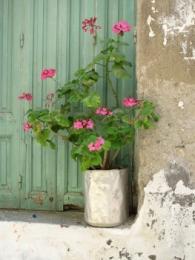
Without exaggeration, it must be said that indoor plants and flowers can be seen in every house and in every apartment. Their variety can satisfy every taste. Geranium also has its many fans.
Content:
- Pelargonium care
- Causes of yellowing leaves and their elimination
- Pelargonium diseases and their treatment
Pelargonium (also called home geranium) the plant is unpretentious, easily tolerates a lack of moisture, and is light-loving. Blooms from spring to late autumn. Excessive watering is harmful to it and can lead to yellowing of the leaves and their falling off. The soil for geranium is prepared from equal parts of turf, humus, sand and peat. Fertilizers should contain more potassium and phosphorus than nitrogen.
Pelargonium care
- The lack of color in winter with healthy leaves can be explained by the increased temperature in the room.
- If watery pads appear on the leaves, this is edema, a non-contagious disease. It appears as a result of abundant watering.
- At the other extreme, insufficient watering also leads to yellowing of the leaves. Watering should be increased.
- Leaves fall, bare stems below indicate a lack of light. Geranium, as mentioned above, is a light-loving plant, and therefore, especially in the winter months, it should be placed on the sunny side.
- A disease such as black leg is manifested by darkening of the stem at the base. This is a contagious disease. The diseased plant must be destroyed.If you want to use the same soil, then it must be sterilized, or better yet, replaced.
- The result of waterlogging can be the appearance of gray mold on the leaves. This contagious disease is caused by the fungus Botrytis. For treatment, the affected leaves are removed, watering is reduced, and the plant is sprayed with a systemic fungicide.
- Geranium can also be affected by pests: aphids, weevil, whitefly. Bordeaux mixture should be used against them.
Causes of yellowing leaves and their elimination
Pelargonium carries positive energy. It pleases the eye with vigorous flowering and bright greenery. But then, seemingly out of the blue, the leaves began to turn yellow and soon fall off.
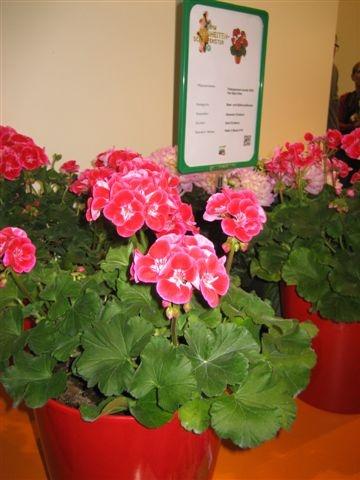
- The first reason is a very cramped pot. There is a common belief that geraniums do not need large pots, but there may be a bias in the other direction. If the pot is too small, then there is simply no room for the roots to develop normally. Replant the geranium in a larger pot and the problem will go away.
- The second possible reason may be improper care of the flower in the autumn-winter period. Geranium does not tolerate drafts; at this time it especially does not like waterlogging. The most comfortable temperature is 10-12 degrees. Do not keep it near heating appliances. It is best to place it on a glazed balcony on the sunny side and limit watering.
- The third reason is the absence or insufficiency drainage in a pot. In this case, the absence of color is added to the yellowness of the leaves.
- Avoid watering too infrequently. The leaves will also turn yellow due to lack of moisture.
- Excess nitrogen in the soil also leads to yellowing. Use potassium-phosphorus fertilizers especially in the summer.
Pelargonium diseases and their treatment
If you find red-brown spots on the leaves, they dry out and fall off, then this is a fungus. It is urgent to remove diseased leaves and treat the plant with Bordeaux mixture.
In the case when the leaves turn yellow and midges appear, this definitely indicates waterlogging of the soil. It is necessary to reduce watering, and apply the drug Bazudin (Grom-2) against midges.
The fungal disease rhizoctonia rot manifests itself by the appearance of depressed dark spots that spread along the stem to a height of up to 25 cm. Infection occurs through the soil, where the fungus is well preserved.
To prevent disease, it is necessary to strictly adhere to growing rules.
If the disease has already appeared, it is necessary to stop watering and treat the plant with fungicides, for example Rovral, Fundazol and others.
Another fungal disease - verticillium wilt. At the beginning of the disease, individual areas of the lower leaves turn yellow. Then the yellowness spreads to the entire leaf; it fades, but continues to hang on the stem, and the yellowness goes higher. The plant becomes infected through the soil, in which the fungus can survive for up to 15 years. To stop the spread of the disease, it is necessary to remove plant debris in time and add trichodermine or fungicide to the soil.
And finally, it must be said that if you properly care for geraniums and carry out preventive measures in a timely manner, they will thank you not only with riotous flowering from the end of March to the beginning of December, but also with bright green leaves.
Not to mention the medicinal properties of the plant, which have been known since ancient times. It is well known that geranium kills germs, that is, it is a natural antiseptic. It’s not for nothing that people love geraniums and plant them everywhere.

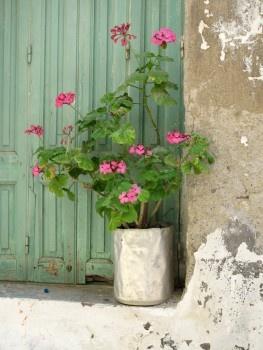
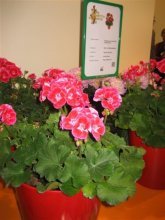
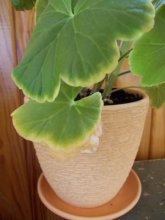
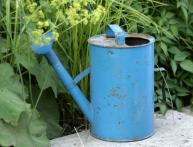
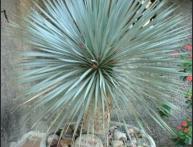
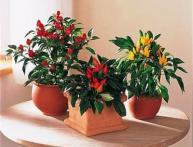
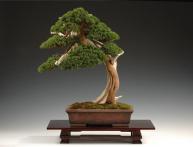
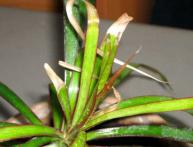
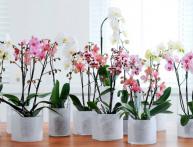


Comments
Here the problem can only be solved by elimination. After all, there really are a lot of reasons. Although, as far as I know, there are rarely problems with geraniums.
The leaves of my geraniums begin to turn yellow in the spring from direct exposure to the sun, so I then move the pots to the north side. And in the summer I plant them in the ground at the dacha. After such a “walk” they are lush and bloom profusely.
Geranium is a plant that does not like direct sunlight, but diffused, but good, light. It looks like there's a lack of light here, or perhaps there's a pest infestation. You can also try feeding it.
Geranium is a plant that does not like direct sunlight, but diffused, but good, light. It looks like there's a lack of light here, or perhaps there's a pest infestation. You can also try feeding it.
It happened to me, the flogging didn’t change. Someone suggested that it might be possible to replant the cramped pot. The pot was not too small, but I still listened to the advice and replanted the plant, it helped, I didn’t see any more yellow leaves.
For me, when a geranium stands in the sun for a long time, the leaves also begin to turn yellow, and if it is in the shade (the windows face the north side), then, on the contrary, it becomes somewhat lethargic. So I’ve been carrying pots from window to window for a year.
I also prefer to plant geraniums in open ground with the onset of stable warmth. The plant really becomes more luxuriant, blooms more profusely, and gets sick less often. And in the fall, into a new pot with renewed soil.
In the fall, I move my geraniums to a shed with a window; we have one between the floors. And in the spring I replant and take it out onto the balcony. This year I was too lazy to replant and got very modest flowering.